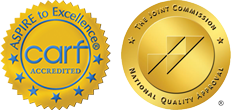Homelessness is a complex issue that affects millions of individuals and families around the world. One significant factor that often contributes to homelessness is addiction. In fact, substance abuse is a prevalent issue among homeless populations, and the challenges faced by these individuals often create a vicious cycle from which it is difficult to escape. In this article, we will delve into the connection between addiction and homelessness, exploring the statistics and factors that contribute to their intersection, and discussing potential solutions to alleviate this ongoing crisis.
Statistics on Addiction and Homelessness
The link between addiction and homelessness is well-documented. According to the Substance Abuse and Mental Health Services Administration (SAMHSA), nearly 38% of homeless people in the United States are dependent on alcohol, and over 26% are addicted to drugs. Furthermore, a 2013 study from the American Journal of Public Health found that alcohol and drug use disorders were present in more than 60% of homeless men and almost 30% of homeless women.
It is crucial to note that these numbers show a strong correlation, but not necessarily causation, between addiction and homelessness. Many factors can contribute to both issues, and it is often a combination of these factors that result in an individual becoming homeless and struggling with addiction.
Factors Contributing to Addiction and Homelessness
Poverty and Lack of Affordable Housing
According to a 2020 report from the National Alliance to End Homelessness, the primary cause of homelessness in the United States is a lack of affordable housing, especially in locations like New York. When individuals and families struggle to afford basic needs such as food and shelter, they are more likely to turn to substances as a coping mechanism. In turn, addiction can exacerbate financial struggles, as individuals may prioritize the procurement of drugs or alcohol over necessities like rent and utilities.
Traumatic Experiences
Exposure to traumatic events can significantly increase an individual’s risk of developing an addiction. A 2014 study published in Substance Abuse and Rehabilitation found that people with post-traumatic stress disorder (PTSD) are two to four times more likely to also have a substance use disorder. Homeless individuals, particularly those who have experienced physical or sexual assault, domestic violence, or military combat, are exposed to multiple risk factors for developing both PTSD and addiction.
Mental Health Disorders
Many individuals experiencing homelessness also struggle with mental health disorders. SAMHSA reports that up to 25% of the homeless population in the United States have severe mental illnesses, such as schizophrenia, bipolar disorder, and severe depression. Unfortunately, mental health disorders and addiction frequently occur together – a phenomenon known as ‘dual diagnosis’ or ‘co-occurring disorders.’ In these cases, individuals may use substances as a means of self-medicating their mental health symptoms.
Demographics Most Affected by Homelessness and Addiction
Homelessness and addiction affect various demographics differently, with each group facing unique challenges and barriers to recovery and stability.
Veterans and First Responders
Veterans and first responders often experience traumatic events that can lead to post-traumatic stress disorder (PTSD). This increases their risk for substance use as they may turn to drugs or alcohol to cope with their symptoms.
Veterans also face significant challenges when transitioning from military to civilian life, including difficulties finding employment and stable housing, which can exacerbate substance use and lead to homelessness.
Teenagers and Young Adults
Many teenagers and young adults experiencing homelessness lack strong support systems. This absence of family or community support increases vulnerability to substance use as a coping mechanism.
Besides, homeless teenagers and young adults often face significant barriers to continuing their education or finding stable employment, which can perpetuate the cycle of homelessness and addiction.
Women
A significant number of homeless women have experienced domestic violence, which is both a cause and a consequence of their homelessness and addiction. Substance use may start as a coping mechanism for the trauma they’ve endured.
Furthermore, homeless women are at a higher risk of sexual exploitation and violence, which are major contributors to substance or alcohol use as a means of coping with ongoing trauma.
LGBTQ Community
Many LGBTQ individuals face rejection from their families and communities, leading to higher rates of homelessness. The stigma and discrimination they encounter can drive them towards substance use.
The LGBTQ community also experiences higher rates of serious mental illness, such as depression and anxiety, which can co-occur with substance use disorders and increase the risk of homelessness.
While homeless shelters and services are available for the general population, they are not always safe or welcoming for LGBTQ individuals, forcing many to avoid these resources and remain in harmful environments where drug use is prevalent.
BIPOC (Black, Indigenous, and People of Color)
BIPOC individuals often face systemic racism, which affects their access to housing, employment, and healthcare, increasing their vulnerability to homelessness and addiction.
Also, there are significant disparities in access to addiction treatment and mental health services for BIPOC communities, making it more challenging for them to receive the care they need.
BIPOC individuals are overrepresented in homeless populations, partly due to socioeconomic inequalities, which can also increase their exposure to environments where substance use is more common.
Do you have a loved one struggling with addiction?
We know how hard that can be. Give us a call to find out what options you have.
Barriers to Treatment for Homeless Individuals with Addiction
Homeless individuals with addiction face significant barriers to substance abuse treatment, including financial constraints, lack of stable housing, and limited access to healthcare and support systems. Let’s discuss these in detail.
Financial and Resource Limitations
Many homeless individuals lack health insurance, which is a significant barrier to accessing addiction treatment services. Even when treatment is available, the cost can be prohibitive for those without financial resources or stable income.
Public and charitable funding for addiction treatment programs is often limited, resulting in long waiting lists and insufficient resources at the treatment facilities to meet the demand.
Lack of Stable Housing and Support Systems
Without stable housing, it is challenging for individuals to maintain a consistent treatment regimen. Frequent moves and lack of a safe place to live make it difficult to engage in ongoing care.
Homeless individuals also lack the family and community support systems that can provide emotional and practical assistance during recovery. As a result, they are forced to live in high-stress environments, such as shelters or on the streets, which can worsen mental health issues and trigger substance use.
Limited Access to Healthcare and Treatment
Access to healthcare and treatment for homeless individuals with addiction is hindered by several factors. Geographical barriers, such as lack of transportation, can prevent access to treatment centers. Additionally, stigma and discrimination surrounding both homelessness and addiction often deter individuals from seeking help or result in substandard care when they do.
Furthermore, homeless individuals frequently have complex health needs that require integrated care, which can be challenging to coordinate and access through traditional healthcare systems.
Breaking the Cycle of Addiction and Homelessness
Addressing the intersection of addiction and homelessness requires a multi-faceted approach that seeks to alleviate both issues simultaneously. Several potential solutions include:
Supportive Housing Programs
Supportive housing programs, such as SAMHSA’s PATH program, combine affordable housing with on-site services like mental health counseling, case management, and substance use treatment. These programs are crucial in helping homeless individuals with addiction establish a foundation of stability and receive the support needed to maintain recovery.
Trauma-Informed Care
To effectively address the traumas that many homeless individuals have experienced, addiction and mental health treatment providers should implement trauma-informed care. This approach acknowledges the impact of trauma on an individual’s life and recovery and strives to create an environment where they feel safe, respected, and empowered.
Integrated Treatment for Co-Occurring Disorders
As the connection between addiction, mental health disorders, and homelessness is strong, it is essential to provide integrated treatment that addresses both addiction and mental health simultaneously. By treating these issues concurrently, individuals are more likely to achieve lasting recovery and decreased risk of future homelessness.
Conclusion
The connection between addiction and homelessness is undeniable, with alcohol abuse being a significant factor in the lives of many homeless individuals. By addressing the root causes of these interconnected issues – poverty, traumatic experiences, and mental health disorders – we can begin to break the cycle of addiction and homelessness and support these vulnerable populations toward recovery and stable housing.
FAQs
What percentage of homelessness is caused by drugs?
It’s challenging to pinpoint an exact percentage of homelessness directly caused by drug use, as various factors contribute to this complex issue. However, numerous studies indicate that substance abuse plays a significant role in homelessness.
According to the National Coalition for the Homeless, about 38% of homeless individuals in America struggle with alcohol dependency, while approximately 26% deal with other substance use disorders, including methamphetamine and opioid overdose. These figures highlight the critical connection between addiction and homelessness while underscoring the importance of services like those provided by Discover Recovery to address both issues concurrently.
Can homeless people get help for their addiction?
Yes, homeless individuals can receive help for their addiction. Numerous organizations and programs are dedicated to providing support and resources for those experiencing homelessness and substance abuse issues. Discover Recovery offers comprehensive treatment plans that address both addiction and the underlying causes of homelessness. These programs often include access to medical care, mental health services, and behavioral health counseling, helping individuals on their path to recovery and stability. Community outreach programs and emergency shelters also play a crucial role in connecting homeless individuals with the necessary resources and support needed to overcome alcohol or drug abuse.
Why is addiction prevalent among the homeless?
Addiction is prevalent among the people experiencing homelessness due to a combination of factors, including mental health problems, lack of social support, and the harsh realities of living on the streets. Many homeless individuals turn to substances as a coping mechanism to deal with trauma, stress, and the challenges of their environment. The cyclical nature of drug addiction and homelessness often worsens the situation, making it difficult for individuals to escape this vicious cycle. Discover Recovery recognizes these complex interconnections and offers tailored programs that address the root causes of addiction.
What support is available for homeless addicts?
There is a variety of support available for homeless individuals struggling with addiction and related health conditions. Organizations like Discover Recovery offer specialized treatment programs that include medical detox, therapy, and aftercare planning. Also, many communities have shelters and outreach programs that provide immediate assistance, such as temporary housing, food, and basic medical care. Mental health services and substance use counseling are also often available through community health centers. Support networks, including peer support groups, can provide ongoing encouragement and assistance as individuals work towards recovery.





